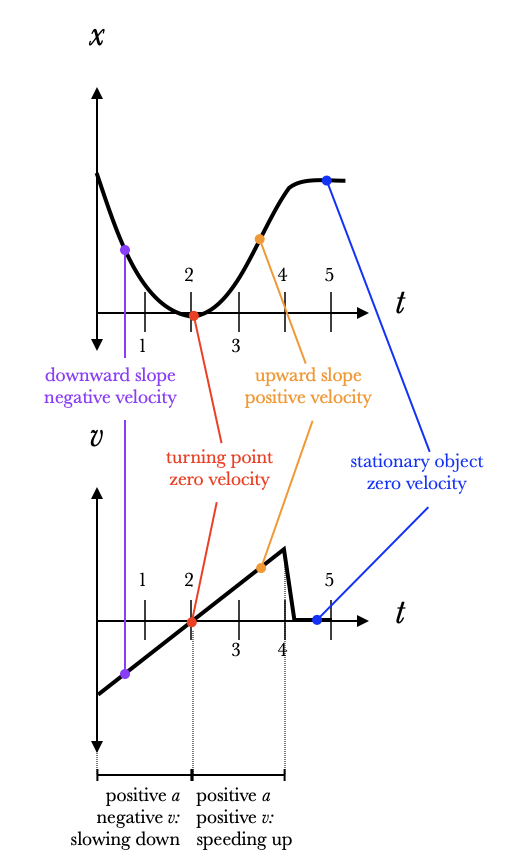15.
Graphing Velocity
It can also be helpful to graph the velocity of an object over time, in addition to the position. The two graphs are not independent: the velocity at any time is the slope of the position graph. A turning point on a position graph corresponds to the place on the velocity axis where the curve crosses the horizontal axis.Because acceleration is defined as $$a={\Delta v\over \Delta t},$$
the slope of the velocity graph is the acceleration.

Consider this example to the right. The object has a positive acceleration until $t=4$, and then a much larger negative acceleration before it comes to a stop. Remember that positive acceleration is not the same as speeding up: sign is about direction. In the first two seconds, this object has a positive acceleration but a negative velocity: the signs are opposite, which means that the object is slowing down (moving closer to zero). From $t=2$ until $t=4$, the acceleration is still positive but now the velocity is also positive, so the object is speeding up (moving away from zero).